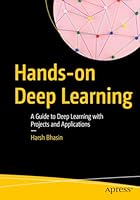
Converting Data into Evidence
- Length: 350 pages
- Edition: 2013
- Language: English
- Publisher: Springer
- Publication Date: 2013-08-05
- ISBN-10: 1461477913
- ISBN-13: 9781461477914
- Sales Rank: #6074654 (See Top 100 Books)
Converting Data into Evidence: A Statistics Primer for the Medical Practitioner
Converting Data into Evidence: A Statistics Primer for the Medical Practitioner provides a thorough introduction to the key statistical techniques that medical practitioners encounter throughout their professional careers. These techniques play an important part in evidence-based medicine or EBM. Adherence to EBM requires medical practitioners to keep abreast of the results of medical research as reported in their general and specialty journals. At the heart of this research is the science of statistics. It is through statistical techniques that researchers are able to discern the patterns in the data that tell a clinical story worth reporting. The authors begin by discussing samples and populations, issues involved in causality and causal inference, and ways of describing data. They then proceed through the major inferential techniques of hypothesis testing and estimation, providing examples of univariate and bivariate tests. The coverage then moves to statistical modeling, including linear and logistic regression and survival analysis. In a final chapter, a user-friendly introduction to some newer, cutting-edge, regression techniques will be included, such as fixed-effects regression and growth-curve modeling. A unique feature of the work is the extensive presentation of statistical applications from recent medical literature. Over 30 different articles are explicated herein, taken from such journals. With the aid of this primer, the medical researcher will also find it easier to communicate with the statisticians on his or her research team. The book includes a glossary of statistical terms for easy access. This is an important reference work for the shelves of physicians, nurses, nurse practitioners, physician’s assistants, medical students, and residents.
Table of Contents
Chapter 1 Statistics and Causality
Chapter 2 Summarizing Data
Chapter 3 Testing a Hypothesis
Chapter 4 Additional Inferential Procedures
Chapter 5 Bivariate Statistical Techniques
Chapter 6 Linear Regression Models
Chapter 7 Logistic Regression
Chapter 8 Survival Analysis
Chapter 9 Other Advanced Techniques







